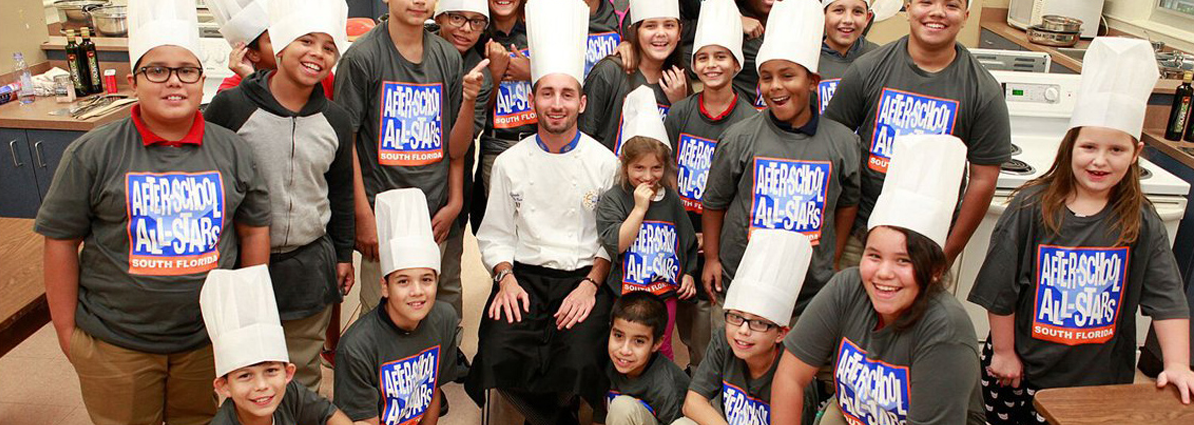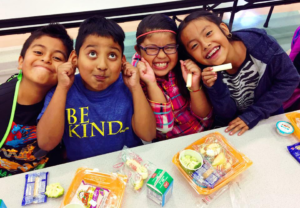Just a short 30 miles to the south of Miami is Homestead, an agricultural community with miles of lush farmland and raw wilderness that stretch as far as the eye can see. As Miami-Dade County’s second-oldest city (it was incorporated in 1913) it’s laden with light-less rough roads that turn pitch black after sunset–a challenge for any school bus to travel on. It’s a stark contrast to the manicured landscapes, high-rise condos, and bright lights of Miami Beach. Palm trees, fruit, spices, and other exotic plants grow in the mild, warm climate, and landscapers come to purchase the palms that will decorate the beautiful hotels that line the Beach where snowbirds flock to every winter, fueling the robust hospitality economy. But for the migrant workers and their kids living in Homestead, there’s no vacation wonderland to where they can escape.
ASAS serves three schools in Homestead and the unincorporated areas around it: Homestead Middle School, Mandarin Lakes K-8 Academy, and Redlands Middle School. The students are the children of migrant agricultural workers, many of whom are undocumented. Like most of Miami, Spanish is the unofficial “official” language. Most students speak English and help translate for their parents and grandparents. Along with these language barriers, it’s somewhat challenging to recruit students to the afterschool program. Often, parents are afraid to have any written records that could be used against them if they were detained by Immigration and Customs Enforcement (ICE). Schools are safe havens, and ICE can’t legally detain students coming to or from school. That sense of security changed recently when a parent at an ASAS site in Homestead was picked up by ICE. It was a reminder of the fragility of these families’ situation.
Despite the hesitation to enroll their children, the lure of free transportation, homework help and meals the program offers often wins parents over. Most parents take the bus to pick up their students, and most have already endured a grueling 3-hour round-trip commute to jobs in northern Miami Dade, so not having to pick up their student makes life a bit easier.
With this community being situated so far from the hustle of Miami Beach and Downtown, it’s hard to bring students on some of the career exploration field trips and enrichment opportunities that All-Stars has access to, but there are some perks to being out in the wilderness. Homestead is surrounded by two national parks, enabling students to enjoy surreal experiences in nature. One such experience was a field trip to the Biscayne Nature Center, where students used fishing nets to gently collect sea sponges and other marine life to examine back at the lab.
But underneath the seemingly pastoral tranquility, families struggle on minimum-wage jobs, and a cold front that comes in can spell disaster for the crops and put thousands out of work. There is rampant gang activity and blatant human trafficking of migrant workers. Trafficking is such a prevalent concern for the community that All-Stars students at Homestead Middle School are focusing their community service efforts to bring awareness to how their peers can help identify and prevent this horrific reality.
Academic support is typically at the top of the wish list for principals when ASAS comes into Homestead schools, and with 90% of ASAS staff being certified teachers from the core day, ASAS excels in this area. There is also a focus on fueling students’ imagination and creativity through our enrichment programs. At Mandarin Lakes, a ceramic kiln went unused for years until an ASAS teacher expressed her interest to lead a class. She is a ceramics enthusiast and, as it turns out, our students are too. Ceramics has quickly become the most popular class offered in the program. Similarly, students have taken to the weaving and origami classes as well.
Beyond Homestead’s swaying palms and mango trees, it is the ceramic vase, the origami crane and the woven work of art created by a migrant mother’s student that makes this community truly beautiful.



